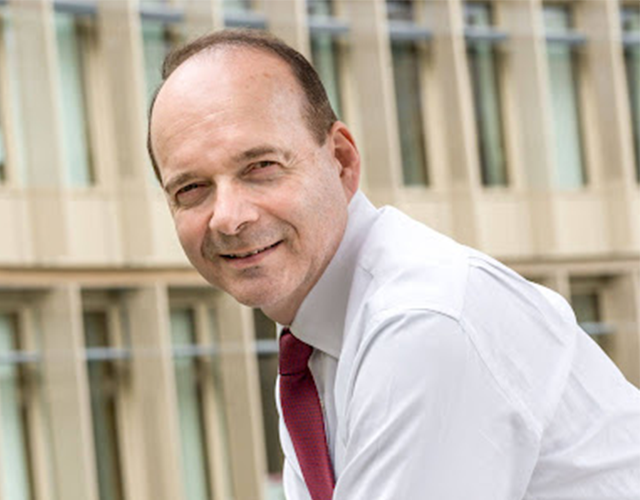Urgence gaz 0 800 028 800

Chloé Quenum… Making the invisible visible
Art and industry: two worlds in total opposition, at first sight. And yet… As part of a patronage scheme run by the Centre Pompidou endowment fund and the Teréga Accélérateur d'Énergies endowment fund, Teréga hosted a residency by Chloé Quenum. A unique occasion for the artist, a graduate of the École Nationale Supérieure des Beaux-Arts in Paris, and an award winner in the Mondes Nouveaux programme supported by the French ministry of culture, to show that the boundaries between artistic creativity and industrial innovation are less clear-cut than they appear at first glance. The artist reflects on her experience.
Sending messages. That is the primary ambition of Chloé Quenum, an eclectic artist who
combines techniques to express her emotions and feelings. During her year’s residency with
Teréga, Chloé Quenum drew inspiration from the company’s activities and facilities, to
create roughly thirty miniature works in coloured blown glass. Those works were put on
display at the Musée des Beaux-Arts in Pau from 4 July to 11 October 2023. Since then they
have moved to the Centre Pompidou in Paris.
Could you share with us something of your experience of your residency with Teréga, how it was organised, and your first impressions of the company’s infrastructures and activities?
CQ: This residency experience came out of a collaboration between the Georges Pompidou
National Centre for Art and Culture and different patron companies. It all started with a
meeting with Dominique Mockly, Chairman and CEO of Teréga, who explained to me what
Teréga does. During that conversation we identified the invisible and unspoken links
between us, such as the history of the company, its location and its geographic location.
Following that, I had the opportunity to visit the Teréga site in Pau on a number of occasions.
What interested me straight away was the idea of invisibility. I was struck by the need to
odorise the gas to make it detectable and therefore less dangerous. I was intrigued by
different aspects of the gas industry: the underground, scentlessness, impalpability and so
on. But also the enormity of the infrastructures. I found this world both fascinating and
disturbing all at once.
How has your experience as an artist in residence impacted your work?
CQ: The richness of this residency experience lay in the change of surroundings. I was able
to confront and immerse myself int a world that otherwise I would never have discovered.
Gas storage and transport were totally alien to me. The shock of this confrontation provoked
questions within me, set me wondering, and this fed into my work. The change of scene, the
meetings with people who do not necessarily have any links with the world of contemporary
art, in the end opened up a whole new language for me. Being confronted with this industrial
landscape, getting a sense of all this invisible matter that surrounds us, this first contact with
the world of Teréga was to me absolutely dizzying.
How has your residency with Teréga influenced your artistic approach and your perception of the world of energy and of the energy transition?
CQ: Ultimately this is most clearly shown in the works that came out of that experience. All
those tubular infrastructures, elbows, shapes, the idea of those flows of circulating matter, all
expressed in the form of blown laboratory glass tubes. It allowed me to reinterpret that
industrial world the way I saw and experienced it. Obviously the link with the Pompidou
Centre’s architecture speaks for itself. The work in residence allowed unconscious
associations to form and emerge over time, not immediately intellectualised, but undeniably
there. One of the works (NDLR: Clouds Make the Moon Invisible) is accompanied by a text
from Alexandra Carlin which came out of the perfume industry. In her text, she describes
scents and essences in a highly technical way and associates sensations and feelings with
them, which are then translated in a scientific way to create a fragrance. Everything in my
experience at Teréga revolves around the visible and the invisible and the bridges that are
formed or could be formed between those two worlds.
And ultimately what have you taken away from this period in your artistic life?
CQ: What stays with me is the incredible welcome I received from Teréga and its teams. At
the human and logistical levels, but also the way these people who accompanied me on my
visits to their infrastructures made themselves available for me… I experienced a real sense
of both enthusiasm and care. This welcoming atmosphere gave me a feeling of total
confidence. The link between my work and the gas industry was not obvious. But what has
come out of that experience is that, behind the infrastructures and production tools, in the
end it is the richness of humanity that reveals and expresses itself.
Explore the works of Chloé Quenum and other artists in residence at Teréga

Dominique MocklyDominique Mockly, Chairman of the Teréga Accélérateur d'Énergies endowment fundFor a company, becoming involved in the arts is much more than a sponsorship initiative. It’s an opportunity to push back the boundaries of creativity and innovation within the company, offering an alternative perspective on the world and drawing inspiration from it. Through our support for Centre Pompidou Accélérations we are also shaping Teréga’s future.

